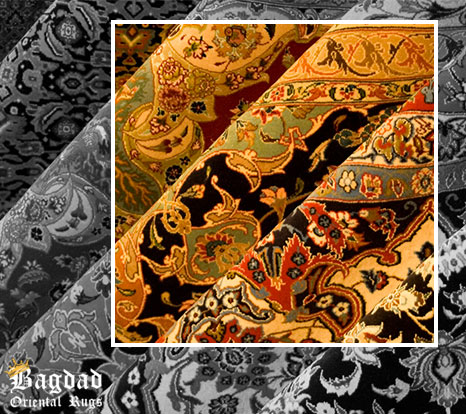If you have a rug that was submerged in floodwaters during Hurricane Harvey, you may have noticed moderate to significant dye migration. Or to put this in layman’s terms, the rug’s colors are bleeding, running or fading. In this article, we’ll address two of the questions that are probably foremost in your mind: what causes the dyes to bleed and how can the rug can be fixed?
Let’s take the first question first: why do rug colors bleed? Let’s review some common reasons:
- Fugitive dyes: No, this isn’t a reference to the Harrison Ford movie from the early 90’s. Rather, a fugitive dye is a term used to describe rug colors that fade during washing and cleaning or when exposed to ultraviolet rays. This means that the dye is unstable enough that prolonged exposure to floodwaters will cause dye migration.
- Excess dyes: This issue will be familiar to people who own tie-dye clothing and have washed it in their washing machines. When you wash a new rug for the first time, there may be color runoff. Another reason rug colors may bleed is if dyes were added to an antique rug in order to give it a fresh, revitalized look.
- Chemical residue: Many in-home rug cleaning solutions leave a residue that often interacts poorly with acid-based dyes, particularly those found in wool rugs. As a result, the rug’s colors will bleed despite the fact that the rug is seemingly “clean.” For this reason, we advise having your rug professionally cleaned if it’s an antique rug made from natural fibers.

There are other reasons that cause rug color bleeding, including high heat, high alkalinity and pet urine. That said, for the purposes of this article we’ll regard these as secondary factors that don’t specifically relate to flooded or water damaged rugs.
Keep in mind that different rug types have their own distinct structural issues and thus require solutions particular to them. With that said, any rug restoration expert worth his or her salt will be aware of your rug’s unique challenges and will be equipped to reverse color bleeding issues if it’s possible to do so.
Before taking your rug in for a professional restoration, we suggest doing the following:
- Take clear pictures of your water-damaged rug. This serves two purposes: one, it provides a rug care expert with a clear look at the bleeding colors and two, it enables you to potentially collect damages from your insurance company should the rug restoration fail to return the piece to its former glory.
- Provide a detailed assessment of the rug color bleeding. Take it from us: no detail, no matter how small it may seem, is insignificant. A “before” photo of your rug before the flood damage is also extremely helpful, as it allows the restoration expert to see what specific damage was caused by flooding, and what may be other forms of wear and tear.
- Look to have your rug professionally appraised before agreeing to any restoration work. This will make it easier to receive funds to have your rug colors restored. In many cases, the professional rug appraiser and rug restoration expert will operate out of the same shop. But in order to avoid a conflict of interest, we recommend seeking an appraiser with no ties to the rug restorer.
- Ask your rug restorer about their liability insurance policy. Many reputable rug repair shops should have no problem ensuring the quality of the restoration work performed. This will also come in handy for insurance purposes. Also be sure to inspect the repaired rug as thoroughly as possible before leaving the shop.
It should be noted that red dyes are especially vulnerable to color bleeding. This isn’t to say that all dyes of this hue will bleed, as some are more colorfast than others. In general, the primary reasons for color bleeding include incorrect dyeing techniques or the use of poor quality dyes. Other factors include excessive exposure to hot water, the use of bleach or high alkaline cleaners, and mixing bright colors (like many reds) with lighter colors (particularly whites).
Fixing a rug with bleeding colors is among one of the more tricky parts of rug restoration. Therefore, don’t be surprised if your floodwater drenched rug won’t be able to make it. If your rug is a cheap, mass-produced item, then we suggest cutting your losses and getting a new rug. If it’s a rug that’s more irreplaceable, such as an antique or expensive rug, it’ll be worth your while to have the piece professionally restored if possible or collect flood damage insurance if not.
For more information, contact Bagdad Oriental Rugs and we’ll provide you with the information you need to restore your rug’s colors to be as good as new!

